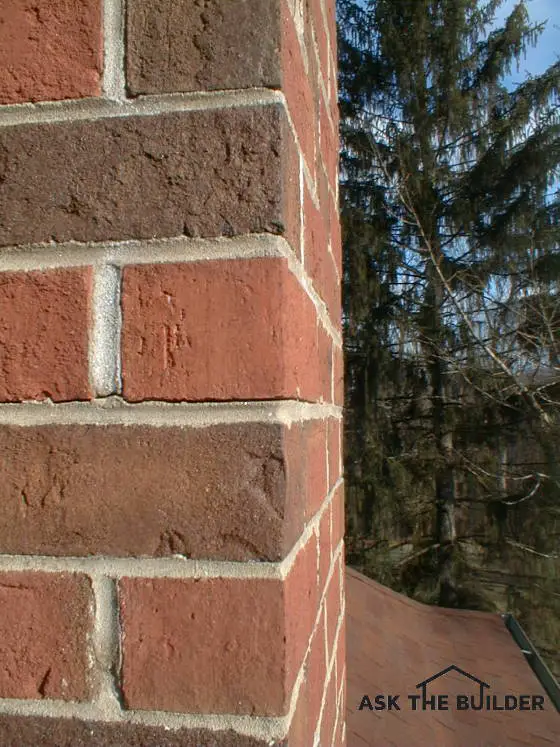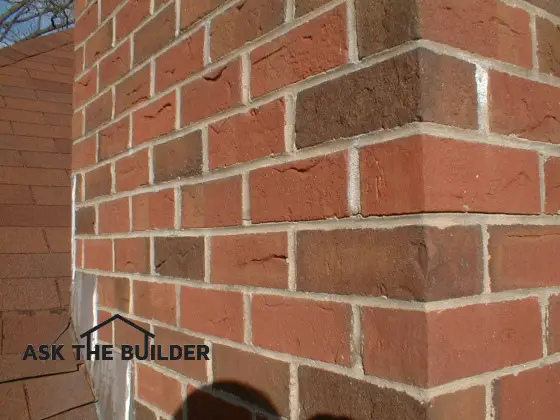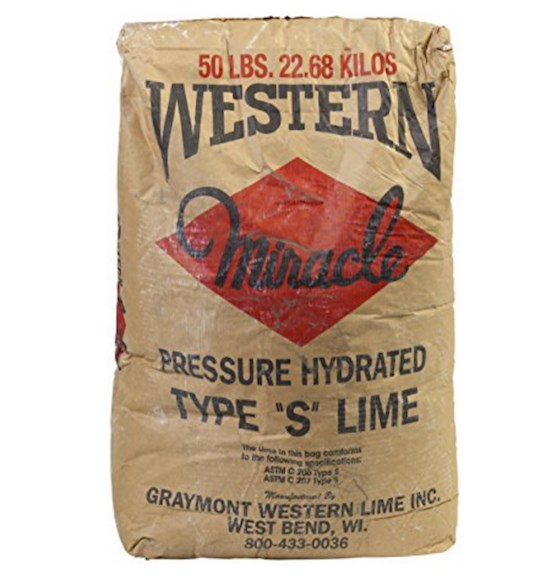Cracks in a New Chimney

Cracks in a New Chimney | The crack in this chimney could be a problem.
DEAR TIM: My six-month-old block and brick chimney has developed some cracks. These 30 - 36 inch long cracks run vertical through both the brick, block and mortar joints. Should I be concerned? Are the cracks normal settling? Is the bricklayer to blame? Some joints weep moisture after a rain. Is that normal? Nick R., Middlebury, VT
DEAR NICK: Cracks that pass through either brick or block concern me. A hairline crack that appears every now and then in either a vertical head or horizontal bed mortar joint may be a simple shrinkage crack. But a long, continuous crack such as the one you describe most certainly is something to investigate.
CLICK or TAP HERE to get FREE BIDS from local masons to repair your chimney.
How Strong is Brick?
Brick, concrete block and even stone are very strong materials when you attempt to squeeze or compress them. Some can have compressive strengths that easily exceed 5,000 or even 7,000 pounds per square inch(psi). Some granites have an incredible compressive strength of 28,000 psi. But subject these same materials to a different force - tension, and they can readily crack. Tension is a bending or stretching force.
What are some causes of chimney cracks?
Settlement could be the cause of failure. The soil upon which the chimney rests might not be strong enough to support the enormous concentrated load that is being placed upon it. The combined weight of all of the brick, block, mortar can be in the tens of thousands of pounds for an average chimney, especially one that has been built correctly where the masonry is solid around the flue liner.
How Big Should a Chimney Footing Be?
The concrete footing for the chimney may also be inadequate. Most chimney footers should be a minimum of twelve inches thick and extend one foot or even 16 inches on all sides of the actual footprint of the chimney. Steel bars, 5/8 inch in diameter, should be placed three inches up from the bottom of the footer. These bars should be placed every 16 inches on center in both directions. Be sure these bars do not droop or fall to the bottom of the concrete during the pouring process.
Can Brick Be Defective?
The actual brick or block may have been defective. But the likelihood of placing several defective masonry units on top of each other where the defects are in perfect alignment is a one-in-a-million possibility in my humble opinion. There is a possibility the mortar below the defective area is of poor quality and the weight of the masonry above it caused the cracks to appear. This is also a low-probability cause.
CLICK or TAP HERE to get FREE quotes from local companies to repair your chimney.
Did the Wind Crack My Chimney?
Believe it or not, the cracks can be wind-related. The mortar that is used to cement the bricks and blocks to one another does not have instant initial strength as the chimney is built. It takes weeks and even months for the mortar to develop its full strength. Strong winds on a new chimney can exert a considerable tension force within the masonry. Block and bricklayers know this and the smart ones often insert steel rods within the chimney as it is being built to help resist the force of the wind. These same steel rods are vitally important for those that build chimneys in seismic zones.
Are Weeping Brick Joints Normal?
The weeping joints are somewhat normal. Rainwater, especially that rain blown against the chimney, soaks into brick veneer and brick and block chimneys. This liquid water sometimes dissipates into the masonry, but large amounts of water can work its way down the chimney and find a pathway back to the exterior through a mortar joint.

The crack travels the entire length of the horizontal bed joint.
Can water leak into the chimney crown?
But liquid water trapped in a Northeast chimney in the winter months is a very bad thing. If large amounts of trapped water freeze, the expanding water can blast the chimney apart. You must make sure the top of the chimney - the crown - is watertight. If there are cracks, you can buy wonderful synthetic polymer compounds that have a color and texture that matches the chimney crown.
These trowel on over the existing cracked crown and provide years of leak-free performance. The actual face of the chimney can be sealed with new clear sealers and compounds that will bridge cracks up to 1/8 inch in width.
Are Cracked Chimneys Dangerous?
A chimney that has been weakened by a building defect or even natural deterioration is a dangerous thing. They can collapse with very little notice and cause serious bodily harm or death and do enormous structural damage to the average house.
What is the Best Repair Mortar?
The best repair mortar for brick chimneys is one made with hydrated lime and sand. This is what the brick masons of old used. When the hydrated lime hardens, it's simply limestone and you know how hard and durable limestone is. CLICK or TAP HERE to have hydrated lime delivered to your home.

This is an excellent hydrated lime. It's a fine white powder and it's going to look great on your home. CLICK HERE or THE IMAGE TO ORDER SOME RIGHT NOW.
It is always a good idea to have a suspect chimney inspected by a residential structural engineer, a seasoned chimney sweep or bricklayer who has 20 years or more experience building chimneys. Rebuild the chimney in fair weather when outdoor temperatures are in the 60 - 75 F range.
Column 495
3 Responses to Cracks in a New Chimney